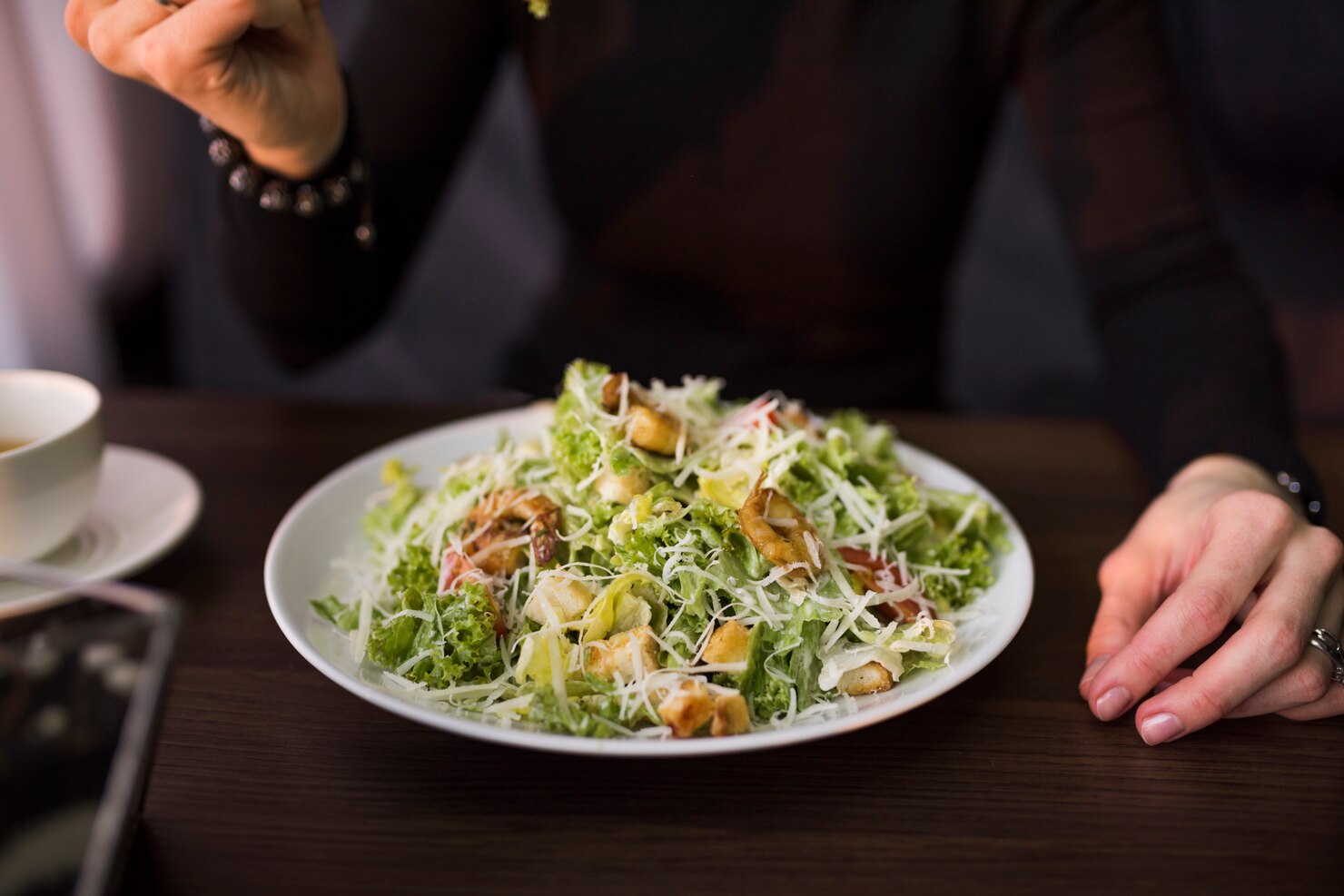When dining out and trying to maintain a healthy diet, salads often seem like the ideal choice. Frequently associated with a balanced, low-calorie, and nutrient-rich lifestyle, restaurant salads are a go-to option for health-conscious individuals. However, not everything is as it seems. While these options appear healthy, many hide ingredients and combinations that might sabotage your efforts to maintain a balanced diet. In this article, we will explore why these salads may not be as innocent as they seem and how to make more informed choices.
The Hidden Reality: What’s Really in Your Salad?
A basic salad typically consists of fresh vegetables, a source of lean protein, and a light dressing. However, the salads you find in restaurants often include additional ingredients that, while delicious, add calories, saturated fats, and sugars.
- High-calorie dressings: Many restaurants use creamy dressings such as ranch, Caesar, or blue cheese, which can contain 150 to 200 calories per tablespoon. Without monitoring the amount added to your salad, you could be consuming as many calories as a full entree.
- Fried or breaded proteins: It’s common to find fried chicken pieces, bacon strips, or even breaded seafood in restaurant salads. While tasty, these proteins are often loaded with unhealthy fats.
- Deceptive toppings: Croutons, high-fat cheeses, sugar-coated dried fruits, and caramelized nuts are common additions that enhance flavor but also add unnecessary calories.
- Oversized portions: Although the size may seem appealing, many restaurant salads contain much larger portions than needed, increasing caloric intake without you even noticing.
Dressings: The Biggest Saboteur
One of the main culprits in turning a healthy salad into a calorie bomb is the dressing. Restaurants often use commercial dressings containing a mix of refined oils, sugars, salt, and preservatives. These ingredients not only increase calorie content but can also negatively impact health.
Common dressing options and their calorie content:
- Ranch: 140 calories per tablespoon
- Caesar: 150 calories per tablespoon
- Balsamic vinaigrette: 90 calories per tablespoon
- Honey mustard: 120 calories per tablespoon
To avoid this pitfall, always ask for the dressing on the side. This allows you to control how much you add and can significantly reduce your calorie intake in most cases.
Additionally, consider the impact of “light” or “fat-free” dressings. While these may seem like healthier choices, they often contain added sugars and artificial flavors to compensate for the lack of fat. Opt for natural alternatives whenever possible.
Proteins: Not Everything Healthy Shines
Although proteins are an essential component of a balanced diet, those found in restaurant salads are not always the healthiest. Restaurants often opt for choices that, while flavorful, are far from nutritious:
- Fried or breaded chicken: A portion of fried chicken can add between 300 and 400 calories to your salad.
- Bacon: While it adds intense flavor, bacon is high in saturated fats and sodium.
- Processed meats: Some restaurants include deli meats, which, in addition to being high in fat, contain additives and preservatives.
The best option is to choose lean proteins such as grilled chicken, steamed fish, or tofu, which provide nutrients without compromising your diet. For a vegetarian twist, consider legumes like chickpeas or lentils, which are rich in fiber and plant-based protein.
Portions: When Less Is More

Portion size also plays a crucial role. Many restaurant salads contain excessive amounts of ingredients that, when combined, turn the dish into a high-calorie meal. For example:
- A large Caesar salad can contain up to 800 calories.
- Salads with toppings like candied nuts or dried fruits can reach up to 1,000 calories.
To manage this, consider sharing the salad with someone else or ordering a smaller portion as an appetizer. Restaurants often serve oversized portions to justify the price, but being mindful of your actual needs can help you avoid overindulgence.
Another strategy is to ask for a “build-your-own” salad option. This way, you can control the portion sizes of each ingredient and ensure your meal aligns with your dietary goals.
Strategies for Making Healthy Choices
Despite the risks, it is possible to enjoy restaurant salads without sabotaging your diet. Here are some strategies to help you achieve this:
- Read the menu carefully: Look for descriptions like “grilled,” “steamed,” or “poached” instead of “fried” or “breaded.”
- Customize your salad: Don’t hesitate to ask for certain ingredients to be removed or for dressings and toppings to be served on the side.
- Opt for homemade dressings: If possible, choose dressings made with simple ingredients like olive oil and lemon juice.
- Control portions: Don’t be afraid to leave some food on the plate or take part of it home to eat later.
- Prioritize vegetables: Ensure that the base of your salad consists mainly of fresh, varied vegetables.
- Limit processed additions: Minimize or avoid toppings like croutons, fried onions, and cheese blends, which can add unnecessary calories.
Healthy Alternatives for Dressings
If you’d like to enjoy dressings without worrying about the calorie content, consider these homemade options:
- Greek yogurt dressing: Mix plain Greek yogurt with fresh herbs, a squeeze of lemon, and minced garlic.
- Homemade vinaigrette: Combine olive oil, balsamic vinegar, Dijon mustard, and a bit of honey.
- Avocado dressing: Mash a ripe avocado with lime juice, salt, and a touch of water to thin it out.
- Citrus zest dressing: Use orange or lime zest with olive oil and a dash of vinegar for a refreshing twist.
Understanding Nutrition Labels
When dining at chain restaurants, take advantage of the nutritional information often provided. This transparency can help you identify salads with excessive calorie counts or hidden sugars. Don’t hesitate to ask your server for detailed information if it’s not readily available on the menu.
Keep in mind that even “healthy” labels like “organic” or “vegan” don’t necessarily mean low-calorie or balanced. An organic salad can still contain high-calorie dressings, and a vegan option might include processed ingredients with added fats and sugars.
Conclusion: A Healthy Dish, If You Know How
Restaurant salads can be a healthy choice, but only if you’re mindful of how they’re prepared and what ingredients they contain. While many may seem light and nutritious, they often hide extra calories in dressings, fried proteins, and deceptive toppings. By making informed decisions and customizing your order, you can enjoy a delicious meal without compromising your health goals.
The next time you choose a salad at a restaurant, remember: the key is in the details. Pay attention, make adjustments, and savor a dish that truly supports your diet and lifestyle. Armed with the strategies and tips shared here, you can confidently navigate restaurant menus and make choices that align with your health and wellness objectives. Let your next salad not only satisfy your hunger but also contribute positively to your journey toward better health.
